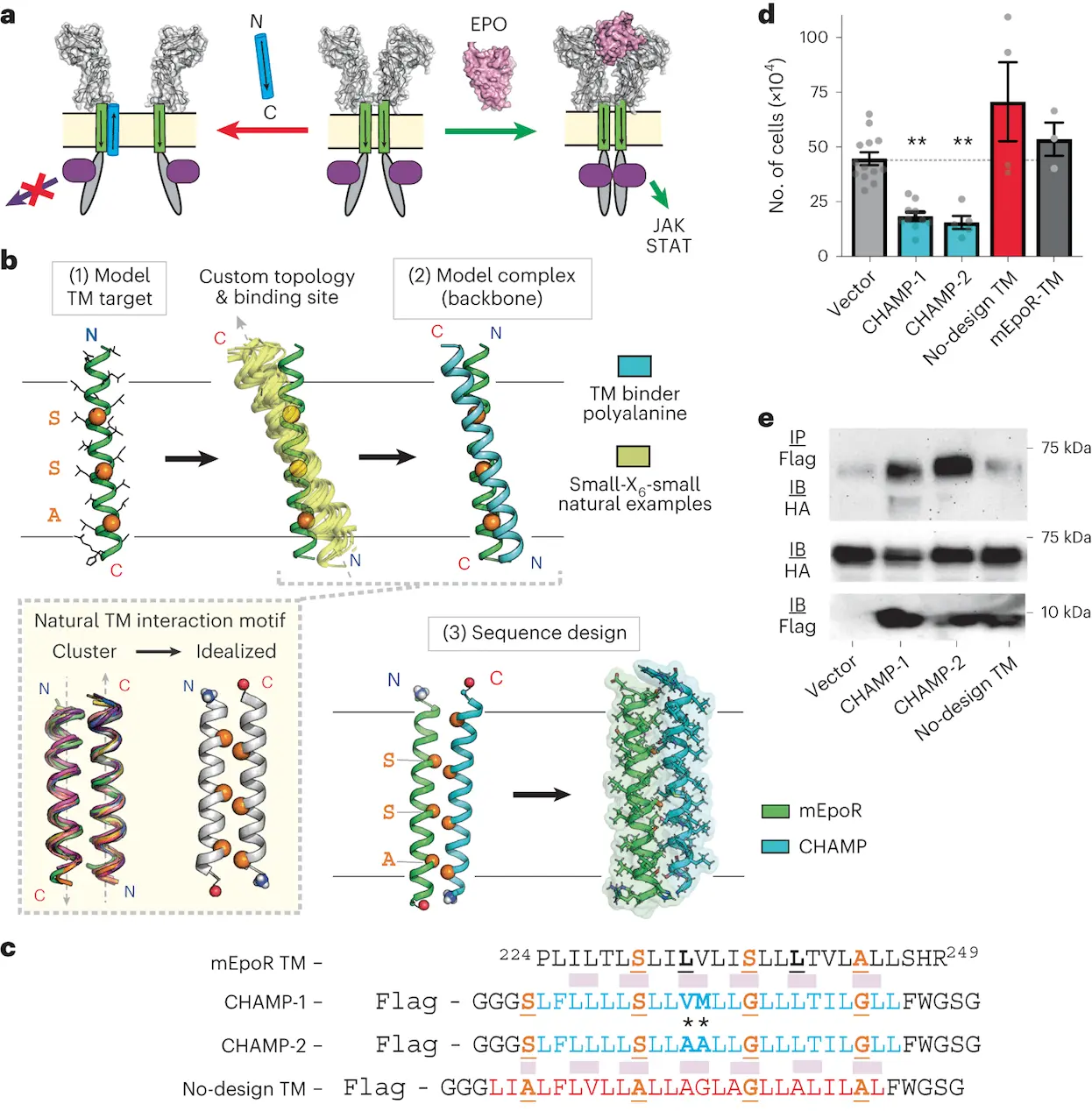Can you imagine that you can design proteins that have a particular function, and they are like small robots working inside our cells? This may be the reality pretty soon. Researchers from the University of California and Yale University came up with an innovative way of creating transmembrane proteins from scratch, thus leading to targeted treatment and a better understanding of cell biology. However, before we dive into this thrilling research, let us first look at what proteins and membranes are.
Proteins: The Workhorses of the Cell
Picture your cells as something like busy factories. Proteins make sure these little factories keep running smoothly the entire time. They exist in a multitude of forms and sizes, each having its own work. Some function as enzymes, which are catalysts for chemical reactions, while others transport molecules across membranes, which enclose every cell as protective barriers.
Transmembrane Proteins: Gatekeepers of the Cell
There is a special kind of protein called Transmembrane proteins; it has a unique structure. It has got a hydrophobic section embedded within the cellular membrane, just like the screw goes into a cork bottle stopper. This part is known as transmembrane domain (TM domain). Depending on its purpose, the other part of the protein can stay in or outside the cell. These domains act as channels for molecule exchange between cells.
Targeting Proteins for Medical Applications
Many diseases occur due to malfunctioning proteins. The focus has always been on soluble ones that are freely moving within a cell. Nevertheless, the TM domain plays an important role in various cellular processes, and targeting them may present novel therapeutic strategies.
Developing molecules that target TM domains has proved difficult. Existing methods tend to mimic natural interactions among proteins, thus limiting design possibilities.
De Novo Design: Building Proteins from Scratch
In 2024, Mravic et al.’s recent paper published in Nature Chemical Biology introduced a new technique known as de novo design, which is revolutionary. This allows scientists to create completely different functions of TM proteins that are not dependent on existing protein-protein interactions. It’s like constructing a machine with all different parts specifically designed for one task only.
Targeting the Erythropoietin Receptor (EpoR)
The researchers used a de novo design method to make TM proteins that targeted the erythropoietin receptor (Epor). Traditionally, scientists have been studying solvable proteins, those that are freely floating in the cytoplasm. TM domains, however, play a wide range of roles in cellular processes and targeting them might create new therapeutic opportunities. The EpoR protein is on the surface of red blood cell precursors and has a significant role in red blood cell production.
The designed TM proteins bind to EpoR in such a way as to prevent it from binding naturally. As a result, the normal functioning of the protein is impaired, leading to one possible method for controlling the red blood cell production rate.
Design Validation: Function & Structure
This study does not just encompass design alone. The de novo-designed proteins work! These include:
- Binding with EpoR in mammalian cells.
- Inhibiting EpoR-driven cellular growth is an essential step in red blood cell synthesis.
- Conformational changes predicted by experiments that confirmed structure interaction with EpOR.
A New Era for Protein Design
This research marks a new beginning in protein design. The potential to generate TM proteins with well-defined functions from the ground up carries huge implications for many aspects of modern science, such as;
Drug Discovery: Making use of de novo-designed TM proteins to address receptors that were previously unapproachable would serve as a basis for new treatments for cancer, autoimmune diseases, and so on.
Basic Research: These proteins can be used as research tools to understand the complex functions of TM domains and their role in cellular signaling.
Biotechnology: For example, tailored TM proteins could be engineered to deliver drugs directly into targeted cells.
The Road Ahead
However, this is not an ultimate discovery of its kind; there are still more things to look at. Further exploration should consider:
- How can we further refine the design process to achieve even greater specificity?
- What other possible applications might de novo-designed TM proteins have?
- How can these safety problems be addressed, and what challenges are associated with delivering these new molecules?
The Future is Engineered: A Brave New World of Proteins
The capacity to elicit proteins from scratch opens up a whole series of possibilities. Imagine if one could custom-make protein machines that precisely regulate intracellular processes. This study brings about the prospect of targeted therapies as well as new approaches for treating diseases that were once considered untreatable. Nevertheless, this is not the end of the road. Further investigations will refine the design process, expand its applications, and evaluate possible risks.
De novo protein design is not just a matter of fiction these days; it’s happening now. As scientists keep on digging deeper, more sophisticated protein tools are expected, which will push the boundaries in medicine, biotechnology, and our overall understanding of life itself. We live in interesting times – being part of this scientific revolution is exciting indeed! Watch out because the future of proteins has started taking shape!
Join the Conversation!
De novo protein design is a fast-evolving discipline that could forever change medicine and our understanding of cellular biology. Are you excited about this remarkable study? Which areas do you think will gain the most from the development of de novo-designed proteins?
Article source: Reference Paper | Reference Article | The computational tool is available for public use on GitHub
Follow Us!
Learn More:
Anchal is a consulting scientific writing intern at CBIRT with a passion for bioinformatics and its miracles. She is pursuing an MTech in Bioinformatics from Delhi Technological University, Delhi. Through engaging prose, she invites readers to explore the captivating world of bioinformatics, showcasing its groundbreaking contributions to understanding the mysteries of life. Besides science, she enjoys reading and painting.
















